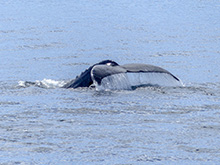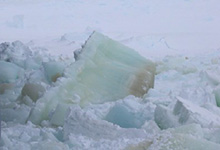Marine Biology
The Marine Biology expertise group started in 2023 and aims to further promote marine biological research in Groningen and to support the ongoing leadership and teaching that its members already provide for the Marine Biology Master’s Degree program at RUG. Establishing their own expertise group has allowed Marine Biology researchers to form larger collaborations due to a close working environment and shared facilities.
Current members have expertise in a wide range of biological fields including conservation/restoration biology, evolutionary and conservation genomics, (eco)physiology of microalgae and animal/algae symbioses, climate-change research, zoology, systematics, genetic analyses of ancient and historic materials, and ecology, which are to be applied to larger projects that require a range of methodologies and approaches. Research is done in all regions of the world’s oceans; from the tropics to the poles. The collaborations that are forming will allow GELIFES to consolidate its position as a formidable institution conducting marine biological research in the Netherlands.
Focal research lines
Britas Klemens Eriksson - Marine ecology

Understanding consequences of the global erosion of species for the integrity of the biosphere is one of the grand challenges for biological sciences in the 21st century. Biodiversity determines the function of ecological communities, including how they respond to major threats to human welfare such as climate change and nutrient loading. The overall aim of the research in the group of Marine Ecology is therefore been to understand how biodiversity loss (in the broad sense) affects the function and resilience of coastal communities.
Laura Govers - Marine conservation ecology
Ellie Laetz - Ecophysiology and evolution of endosymbioses

We are interested in the relationship between marine organisms and their environments. Climate change is disrupting marine ecosystems and some organisms are more vulnerable than others, but we don’t properly understand why. In the Ecophysiology and Evolution of Endosymbioses (E3) Lab, my students and I investigate how environmental stress affects marine animals using an integrative approach and a wide variety of different biological techniques. We focus on animals that form symbiotic relationships with algae, from sea slugs to upside-down jellyfish, sea anemones, and more, to unravel fundamental aspects of the algae-animal symbiosis, explore the tradeoffs associated with symbiosis and predict how these organisms will cope with the warmer, more acidified and deoxygenated oceans of the future.
Per Palsbøll - Marine evolution and conservation

Our research group employs empirical as well as simulated genetic and genomic data in conjunction with population and evolutionary genetic theory to study fundamental and applied aspects of marine evolution, ecology, animal behavior and conservation. Although the main focus of our research is on marine mammals, and especially large whales, we apply our studies across a wide range of species.
We also contribute to conceptual and theoretical aspects, such as defining management units, genetic tagging and inference methods based on kinship to infer contemporary dispersal rates and abundance, as well as Bayesian paternity inference, and non-equilibrium approaches, such as isolation-with-migration.
Our research benefits from an extensive network of collaborators, whose complementary knowledge and skill sets enable us to tackle the increasingly complex nature of marine evolution and ecology.
Jacqueline Stefels - Ecophysiology of marine microalgae

A dominant feature of polar coastal ecosystems is the presence of seasonal sea ice. Depending on the season, sea ice covers 4 to 20 Mkm2 of the Southern Ocean. Within sea ice, complex and highly heterogeneous ecosystems develop. Variations in ice type determine the composition of the microbial community.
Sea ice micro-algae start to grow in early spring, when incident light becomes sufficient. The extremely high accumulation of biomass can be a significant source of the climate-active gas dimethyl sulphide (DMS). There are some data in the literature describing extremely high amounts of dimethyl sulphoniopropionate (DMSP), the algal precursor of DMS, in sea ice. There is however, no data on the occurrence of DMS in ice, let alone on the mechanisms that control the production and conversion of DMS and DMSP.
There are several factors that make living in ice stressful: high salinity, light inhibition and UV-radiation in the top layers of the ice, at the same time light limitation in the bottom layers and a steep temperature gradient of about 15 to 20 °C within the ice column. In addition, sea-ice assemblages are densely packed in narrow brine channels. Here, a depletion of inorganic carbon almost to exhaustion and an increase in pH to 11, can be found as a consequence of high photosynthetic activity. Given the high biomasses of viable algae in the sea ice, some species have been able to adapt to this multiple stress environment, but little is known about their strategies. In this project it is hypothesised that the production and conversion of DMSP can play a crucial role.
Sancia van der Meij - Marine evolutionary ecology
Associated research
Thomas Hackl - Eco-evolutionary bioinformatics
| Last modified: | 16 April 2025 2.40 p.m. |
